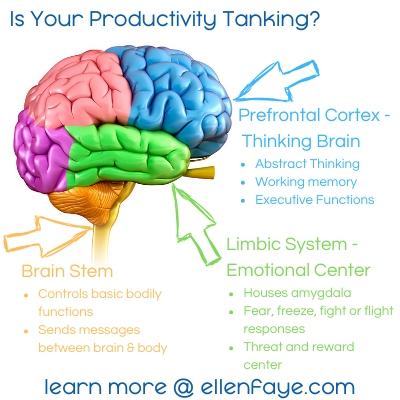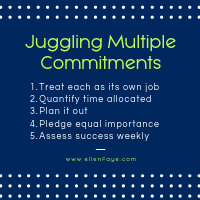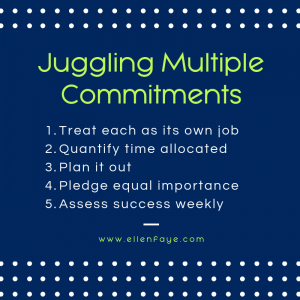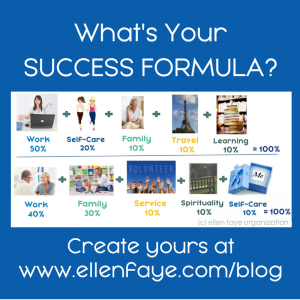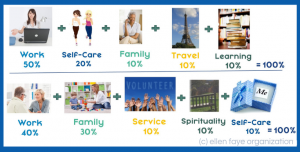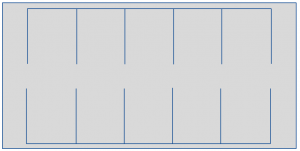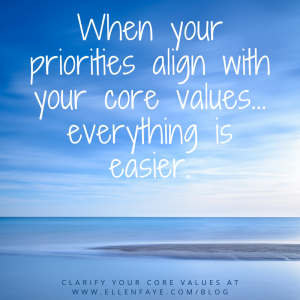19 Mar Is Your Productivity Tanking? There’s A Reason For That.
Last week I shared some tips about maximizing productivity while working from home. And this week…. well things are different. I’m having a hard time getting much done. I thought this would be a perfect time to dig into this book I’m writing… It’s really hard. And there is a reason for that. (A sneak peak of what I’ll be writing about.)
We start with a quick look at the brain. In the simplified picture above, we see 3 areas; in evolutionary order – the brain stem, the limbic system, and the prefrontal cortex.
The brain stem is the oldest, most evolved part of the brain. We don’t have control over it. It basically functions on autopilot.
Next, in evolutionary terms, is the limbic system. It is our emotional default center. We have some control here, but it takes over when it needs to.
And then we see the evolutionary newer Prefrontal Cortex (PFC); this is where we think, process, and remember.
To get into flow (optimized productivity), we need to be in our thinking brain – the PFC. This is the part of the brain that sets humans apart from other animals. It’s where we do our abstract thinking, and where our executive functions and working memory live.
The limbic system is the emotional center. This houses our amygdala – the home of the freeze, fight, and flight response. The amygdala takes over when we are overstressed, in fear, and/or anxious. Because the limbic brain is evolutionarily older than the PFC/thinking brain, it easily overrides it. And when this happens, our concentration, focus and efficiency is compromised.
To illustrate, let’s look to our caveperson ancestors. Cave-woman Wilma is working on learning her wall symbols. Suddenly, a wolf enters the cave and lunges for her baby. It’s Wilma’s limbic/emotional brain that overtakes her PFC/thinking brain and enables her to snatch the baby away from the wolf in the nick of time. The limbic brain wins. The limbic brain almost always wins. It’s physiological and not within our control, just like our heart beat is not within our control.
Coronastress is supercharging our limbic system. Yes, we can get work done, but getting into flow? We may need some time for that. This is the time to be kind to yourself. Having realistic expectations is helpful all around.
Self-compassion expert Dr. Kristin Neff, in her self-compassion Ted Talk, says “When we fail and feel inadequate, we are fighting ourselves. We are the attacker and the attacked.” When we are too hard on ourselves, we flip our brains from the PFC to the amygdala. Now add the uncertainty and stress of Covid-19, and you can see that it’s natural for our productivity to tank.
Taking care of yourself emotionally and physically is important in keeping your immune system strong. If you need support, please reach out. I’m offering my coaching services (leadership, productivity, business and organizing) via phone and Zoom and am available to help. I invite you to schedule a complimentary consultation with me here.



